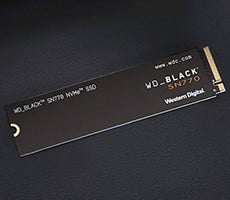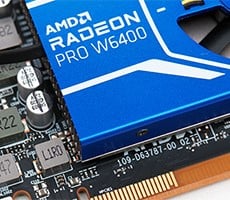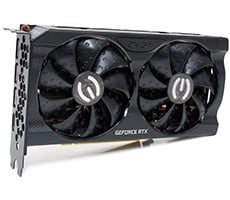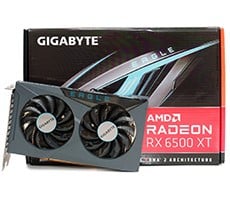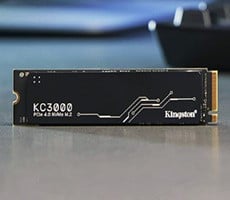ASUS Xonar DX PCI Express 7.1 Audio Card
|
| AMD Athlon X2 5200+ (2.6GHz) MSI K9A2 Platinum (AMD 790FX) 2x1GB OCZ Gold XTC PC2 8800 CL 5-6-6-15 DDR-800 Sapphire HD 3870 On-Board Ethernet ASUS Xonar DX PCI-E ASUS Xonar D2 Ultra Fidelity 7.1 Sound Card PCI SoundMax ALC888 Integrated Audio WD1500 "Raptor" HD (10,000 RPM SATA) Windows Vista Business SP-1 |
Testing Methodology: In testing the performance of the Xonar DX PCI Express 7.1 Sound Card, we've taken several approaches. First, we ran RightMark's Audio Analyzer 6.0.6 to gauge the card's vital statistics. Next, we performed some benchmark tests using 3DMark Vantage and Half-Life 2: Episode 2 for real world gaming performance. In all tests, performance was compared to our test bed's Realtek HD Audio integrated controller as well as a Xonar D2 Ultra Fidelity 7.1 PCI Audio Card. All tests were run at 24-Bit. Subjective audio testing was done with 70 Watt Logitech X-530 Series Speakers. |
|
The RMAA suite is designed for testing quality of analog and digital paths of any audio devices, be it a sound card, an MP3 player, a consumer CD/DVD player or an acoustic set. The results are obtained by playing and recording test signals passed through the tested audio path by means of frequency analysis algorithms.
| Test | 24-bit / 44.1kHz | 24-bit / 48kHz | 24-bit / 96kHz | 24-bit / 192kHz |
| Frequency response (from 40 Hz to 15 kHz), dB: | +0.01, -0.03 | +0.01, -0.03 | +0.01, -0.04 | +0.01, -0.05 |
| Noise level, dB (A): | -109.6 | -111.2 | -111.2 | -111.4 |
| Dynamic range, dB (A): | 109.7 | 111.1 | 111.4 | 111.3 |
| THD, %: | 0.0008 | 0.0008 | 0.0008 | 0.0008 |
| IMD + Noise, %: | 0.0014 | 0.0012 | 0.0012 | 0.0012 |
| Stereo crosstalk, dB: | -105.5 | -105.6 | -106.5 | -104.8 |
ASUS Xonar D2
| Test | 24-bit / 44.1kHz | 24-bit / 48kHz | 24-bit / 96kHz | 24-bit / 192kHz |
| Frequency response (from 40 Hz to 15 kHz), dB: | +0.04, -0.04 | +0.04, -0.04 | +0.06, -0.04 | +0.07, -0.04 |
| Noise level, dB (A): | -107.9 | -115.3 | -115.2 | -115.2 |
| Dynamic range, dB (A): | 107.8 | 115.2 | 115.3 | 115.1 |
| THD, %: | 0.0007 | 0.0007 | 0.0007 | 0.0009 |
| IMD + Noise, %: | 0.0018 | 0.0015 | 0.0014 | 0.0015 |
| Stereo crosstalk, dB: | -105.0 | -105.6 | -105.5 | -105.6 |
Realtek ALC888 Int. Audio
| Test | 24-bit / 44.1kHz | 24-bit / 48kHz | 24-bit / 96kHz | 24-bit / 192kHz |
| Frequency response (from 40 Hz to 15 kHz), dB: | +0.19, -0.20 | +0.02, -0.06 | +0.14, -0.25 | +0.13, -0.26 |
| Noise level, dB (A): | -79.3 | -83.0 | -83.0 | -83.1 |
| Dynamic range, dB (A): | 79.3 | 83.0 | 82.9 | 83.0 |
| THD, %: | 0.128 | 0.0029 | 0.0038 | 0.0043 |
| IMD + Noise, %: | 0.257 | 0.022 | 0.021 | 0.022 |
| Stereo crosstalk, dB: | -79.9 | -80.4 | -79.0 | -76.5 |
When reviewing the vital statistics of each audio solution tested, focusing on the highest quality settings, both Xonar cards offer higher quality across the board, with the Xonar DX PCI-Express card only a minor step behind that of the Xonar D2 Ultra. All tests were significantly better then the Realtek ALC888 integrated controller we used for comparison. Noise levels were significantly lower in all tests, with the DX offering roughly -25dB improvement vs the Realtek ALC888 while coming in within several points of the Xonar D2 Ultra. We saw similar improvements in Stereo crosstalk, where the signal improved -25dB as well, although the two Xonar cards were on the same level of performance. The goal with the ASUS Xonar DX is to offer better audio quality than common integrated audio and these metrics show that when it comes to overall quality, the Xonar DX is definitely a huge improvement.

